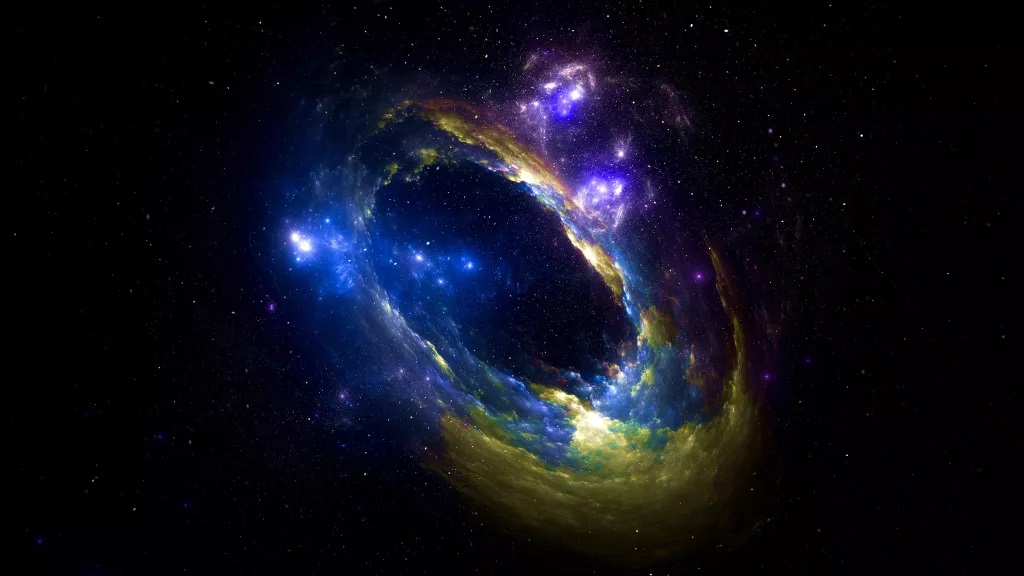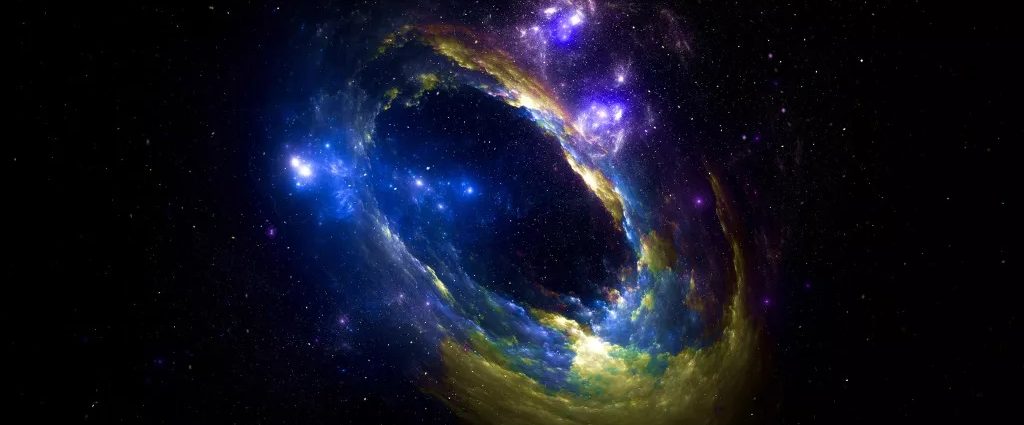
Black holes are perhaps the strangest, least-understood objects in our universe. With so much potential — being linked to everything from wormholes to new baby universes — they have sucked in physicists for decades.
But as strange as these known objects are, even stranger types of black holes could be dreamed up. In one upside-down, hypothetical version of the universe, a bizarre type of black hole could exist that is stranger than an M.C. Escher sketch. Now, a team of researchers has plunged into the mathematical heart of so-called charged black holes and found a slew of surprises, including an inferno of space-time and an exotic fractal landscape … and potentially more.
Welcome to a holographic superconductor
There are all sorts of potential, hypothetical black holes: ones with or without electric charge, ones spinning or stationary, ones surrounded by matter or those floating in empty space. Some of these hypothetical black holes are known for certain to exist in our universe; for example, the rotating black hole surrounded by infalling matter is a pretty common presence. We’ve even taken a picture of one.
But some other kinds of black holes are purely theoretical. Even so, physicists are still interested in exploring them — by diving into their mathematical foundations, we can realize new relationships and implications of our physical theories, which can have real-world consequences.
One such theoretical black hole is an electrically charged black hole surrounded by a certain kind of space known as anti-de Sitter. Without getting into too much of the nitty-gritty, this kind of space has constant negative geometric curvature, like a horse saddle, which we know is not a good description of our universe. (A cosmos with anti-de Sitter space, all else being the same, would have a negative cosmological constant, which means that any matter would tend to condense into a black hole, versus the known accelerating expansion that is flinging the universe apart.
This horse-saddle space doesn’t exist in our universe, But that’s okay: It turns out that these exotic black holes still have surprisingly intricate structures worth exploring.
One of the reasons it’s worth exploring is that charged black holes share a lot of similarities with rotating black holes, which certainly do exist in our universe, but charged black holes are mathematically simpler to grapple with. So by studying charged black holes we can gain some insights into real-world rotating black holes.
Also, physicists have found that when these black holes become relatively cool, they build up a “haze” of quantum fields around their surfaces. This haze sticks to the surface, pulled inward by the never-tiring gravity of the black hole itself, but pushed outward by the electric repulsion of the same black hole. A haze of quantum fields operating in stability on a surface is also known as a superconductor. Superconductors have real-world applications (namely, they can transmit electric current with no resistance), so seeing how superconductors play out in these exotic scenarios helps us understand their mathematical structures, which can potentially lead to new insights with actual applications.
In a study published Aug. 28 to the preprint database arXiv, a team of researchers has recently used the language of superconductivity to discover what lies farther beneath the surface of these hypothetical black holes.
Let’s dive in.
The almost-wormhole
“Normal” charged black holes — those surrounded by a typical garden-variety space-time that you might find in our universe — have a few quirks on their inside. First, beyond the event horizon (the boundary of every black hole, where once you fall in you can’t get out) lies something called an inner horizon, a region of intense quantum energies. Beyond that is a wormhole, a bridge to a white hole in some other lonely section of the universe (at least, according mathematics).
A strange universe
But once you made it past the vibrating space-time, what comes next is truly mystifying. The researchers discovered that the innermost regions of a superconductor black hole can feature an expanding universe in grotesque miniature, a place where space can stretch and deform at different rates in different directions.
What’s more, depending on the temperature of the black hole, some of these regions of space can trigger a new round of vibrations, which then create a new patch of expanding space, which trigger a new round of vibrations, which then create a new patch of expanding space, and so on and so on at ever smaller scales.
It would be a mini fractal universe, repeating endlessly from large scales to small. It’s downright impossible to describe what it would be like to traverse such a landscape, but it would surely be weird.
At the center of this strange fractal, chaotic mess is the singularity: the point of infinite density, the place where every bit of matter that ever fell into the black hole resides.
Unfortunately, even with their super-charged superconducting mathematical techniques, the researchers can’t describe what happens at the singularity. All known physics breaks down, requiring new theories of gravity to fully describe.
Who knows what you’ll find at the center of a superconductor black hole, but at least you’ll enjoy the ride down.





















